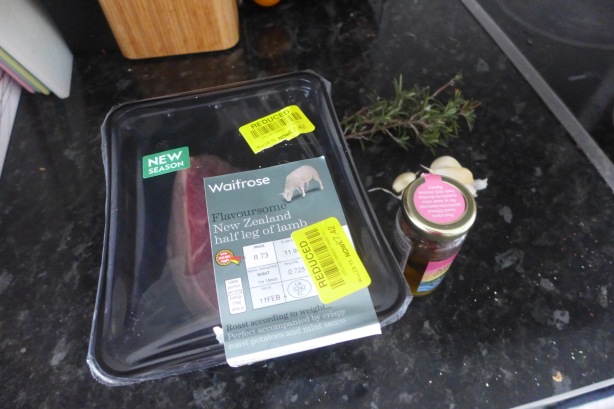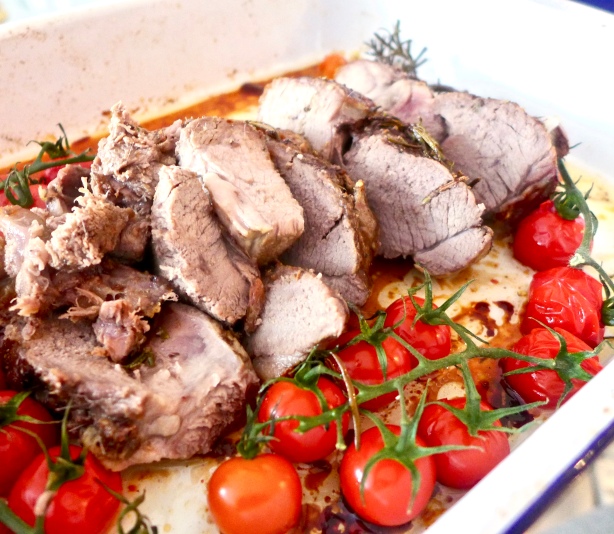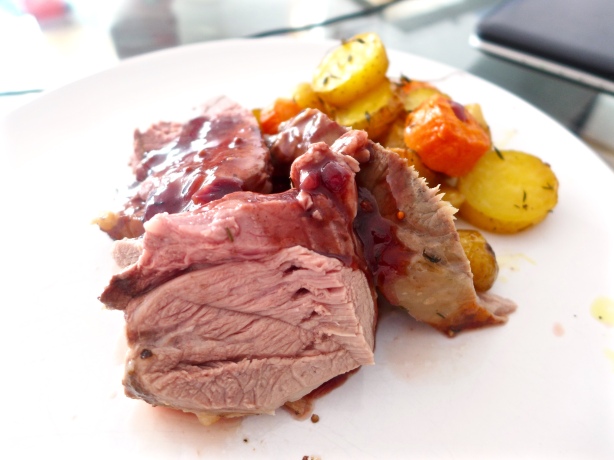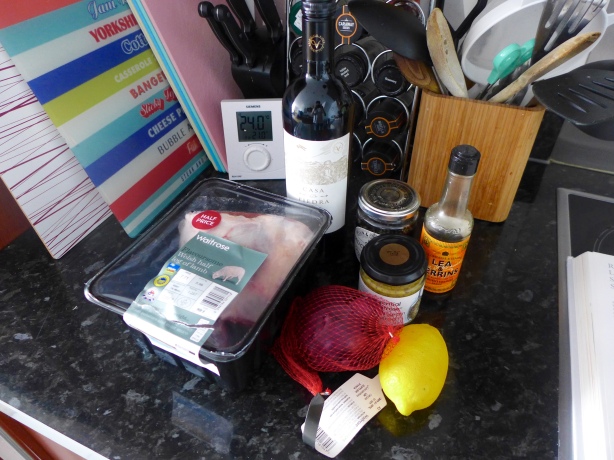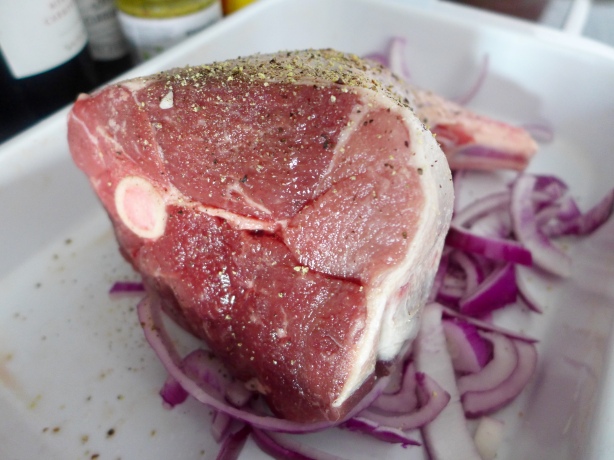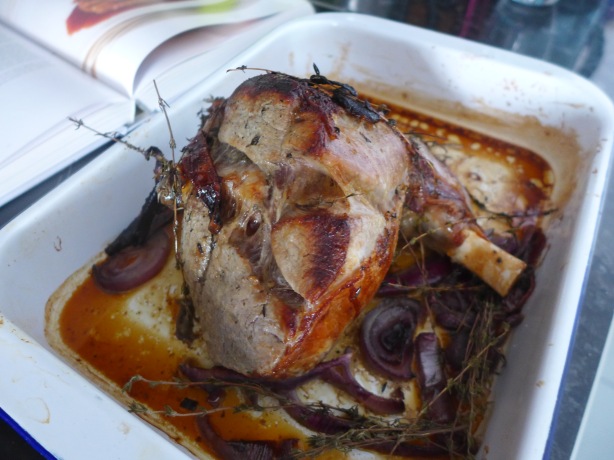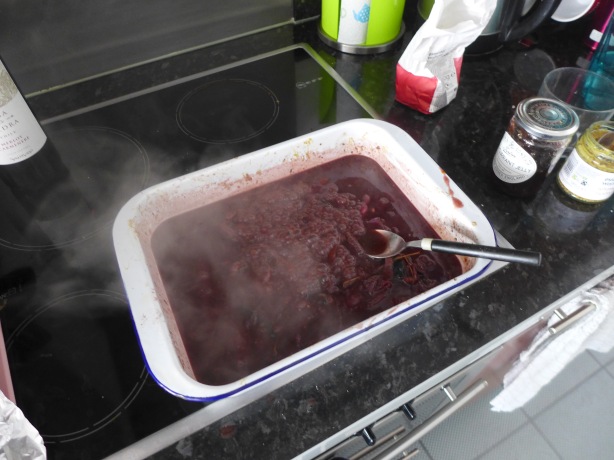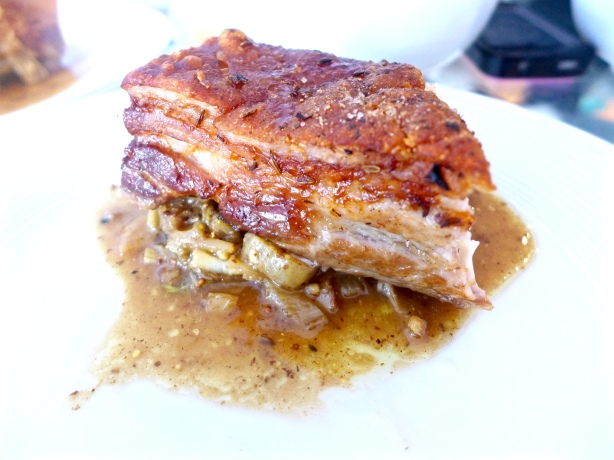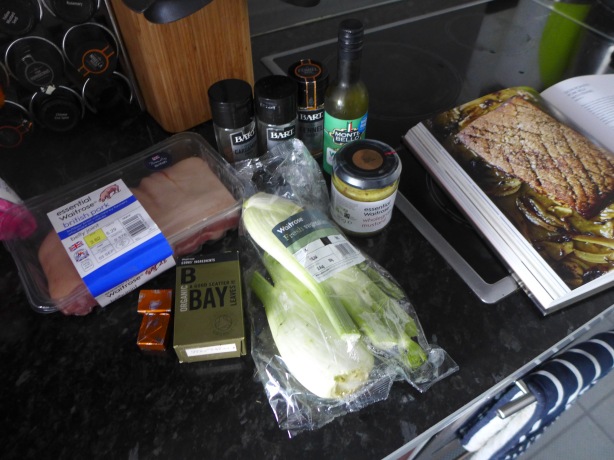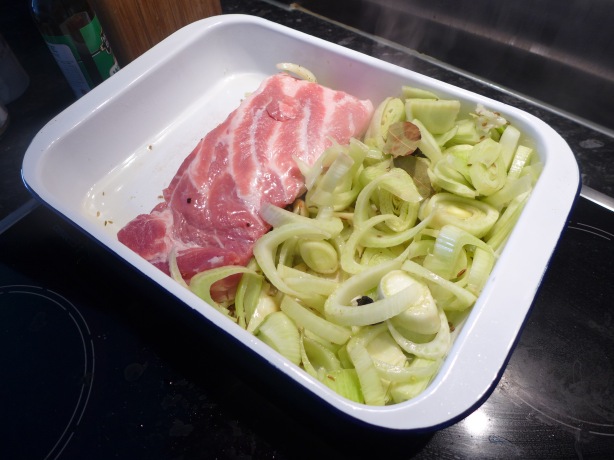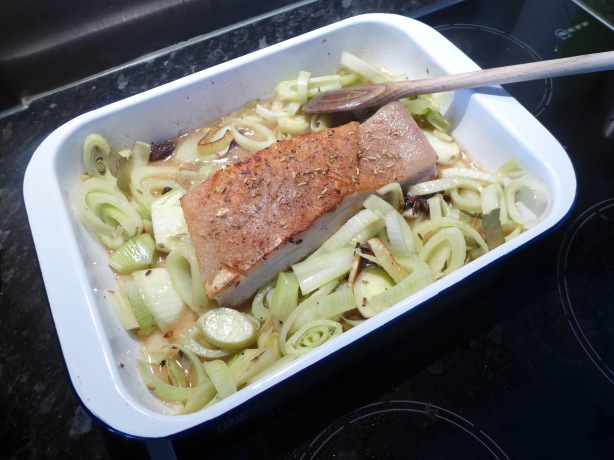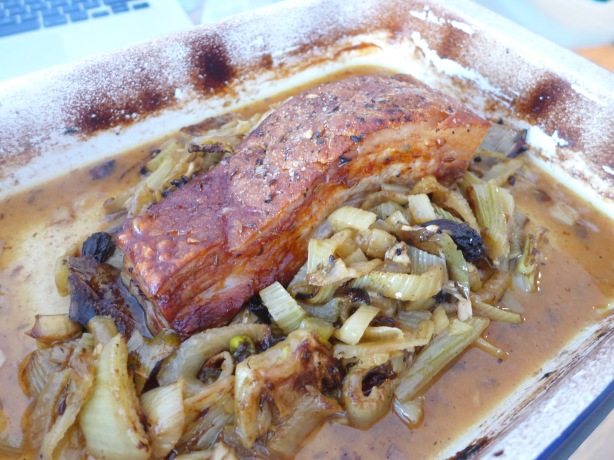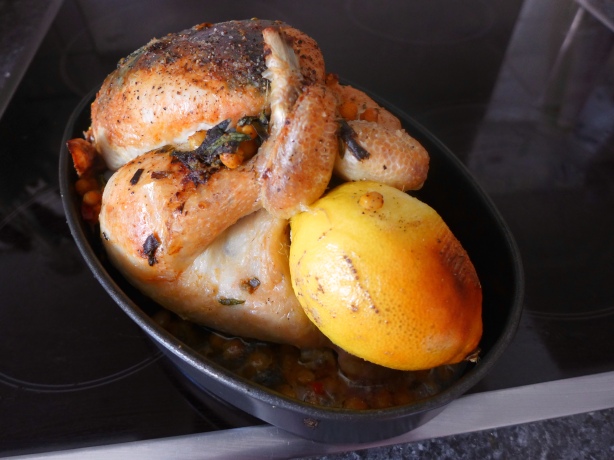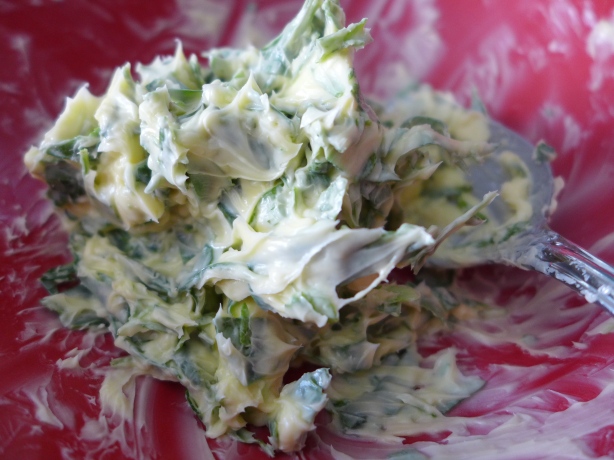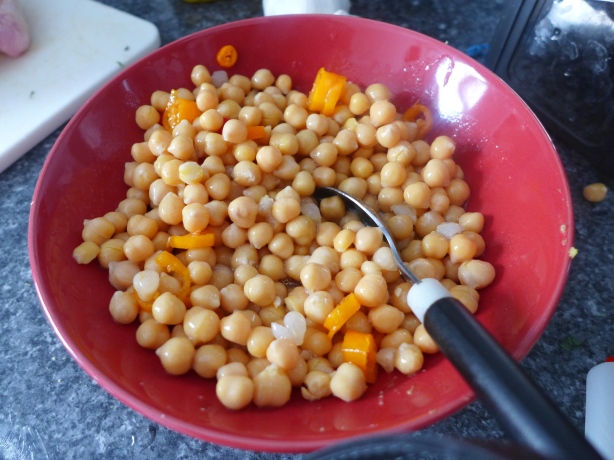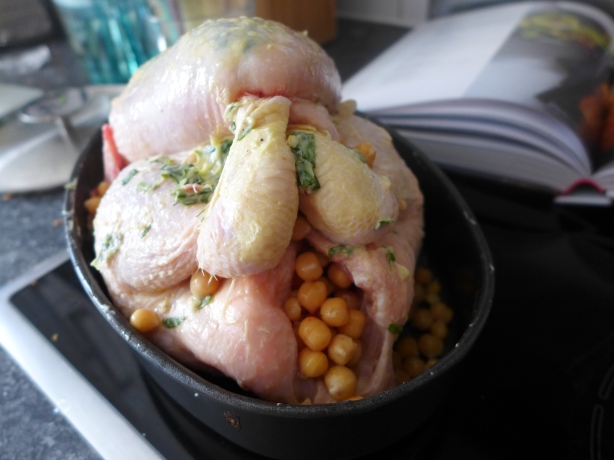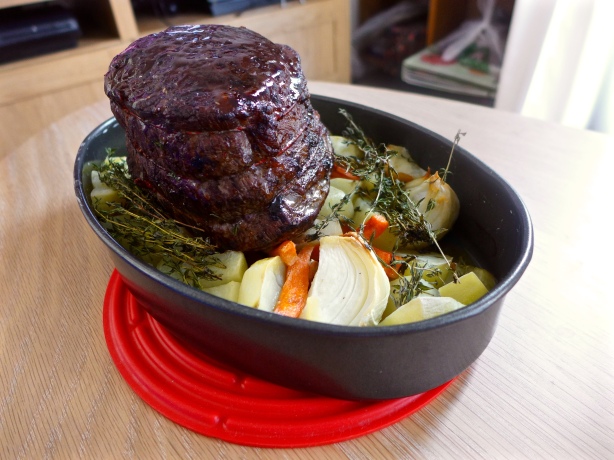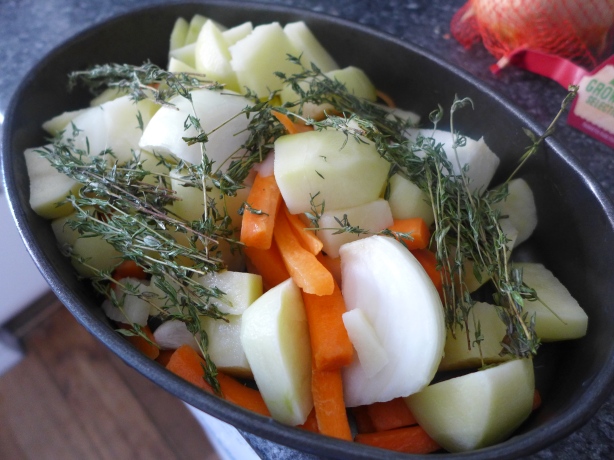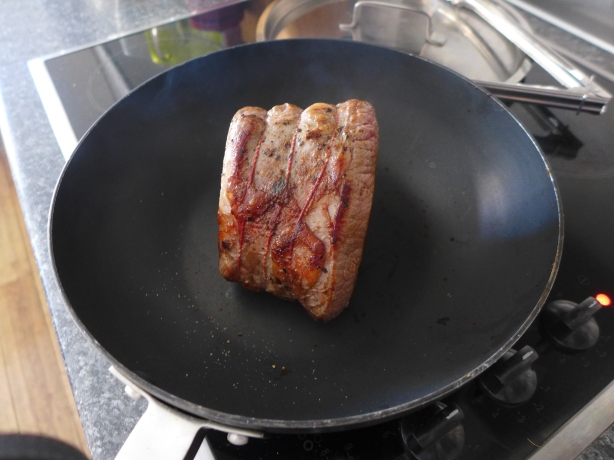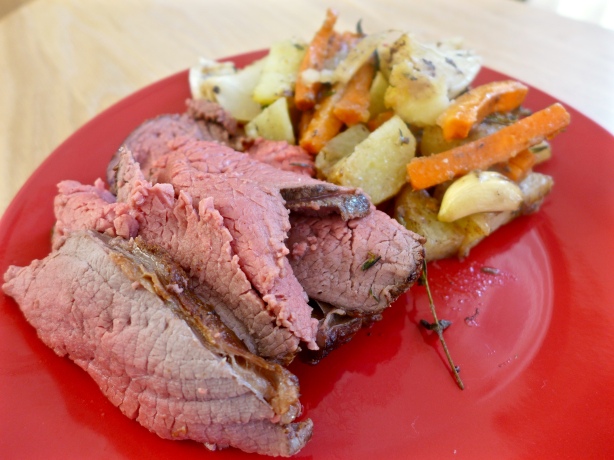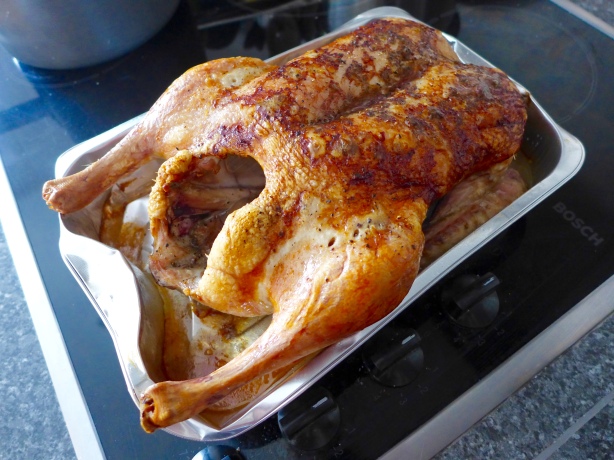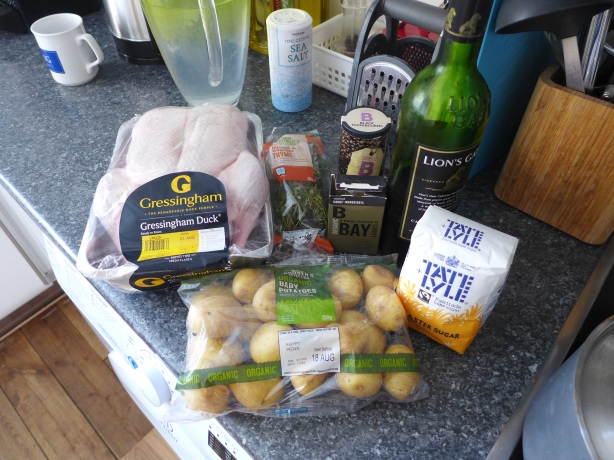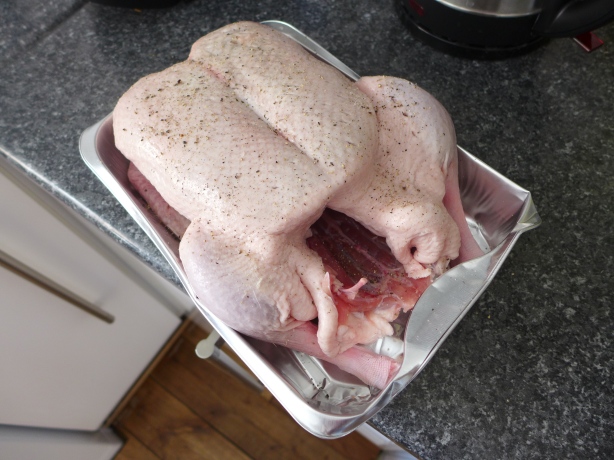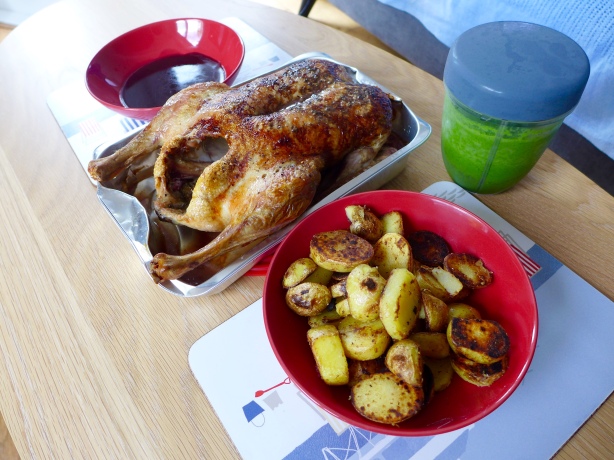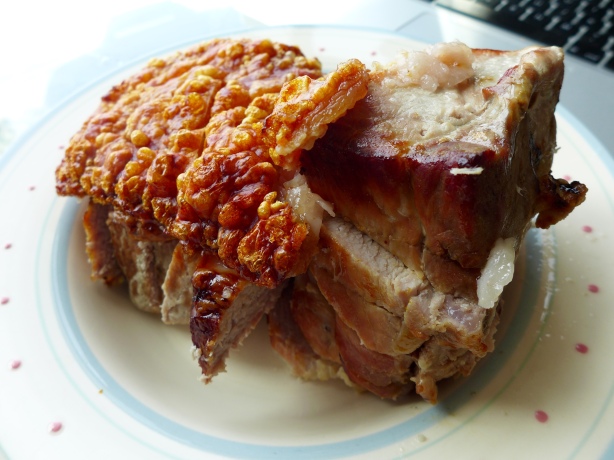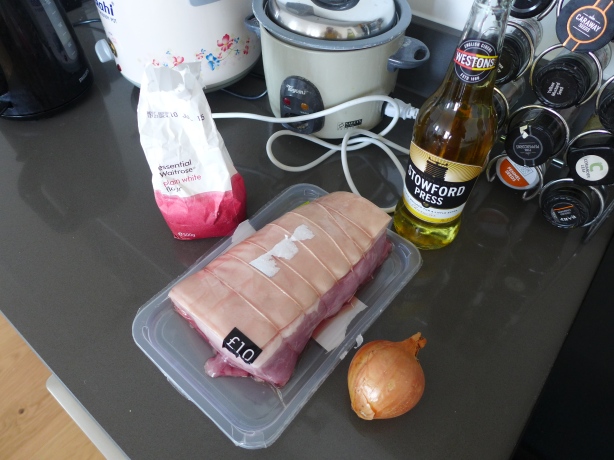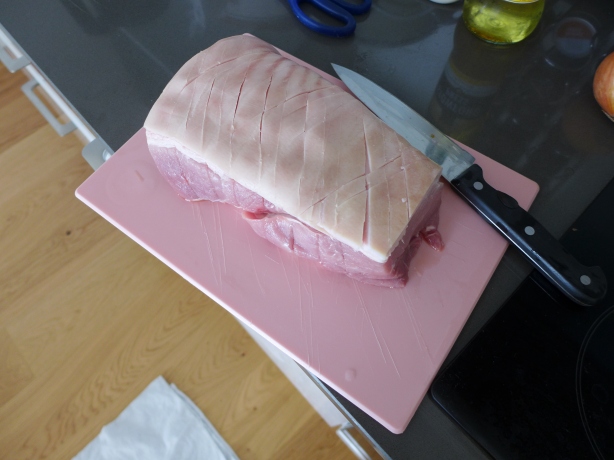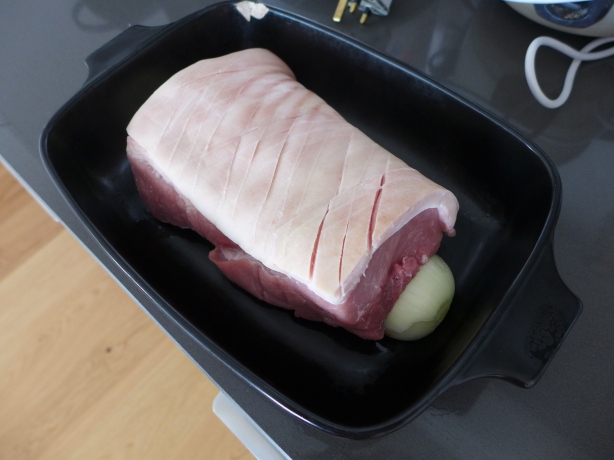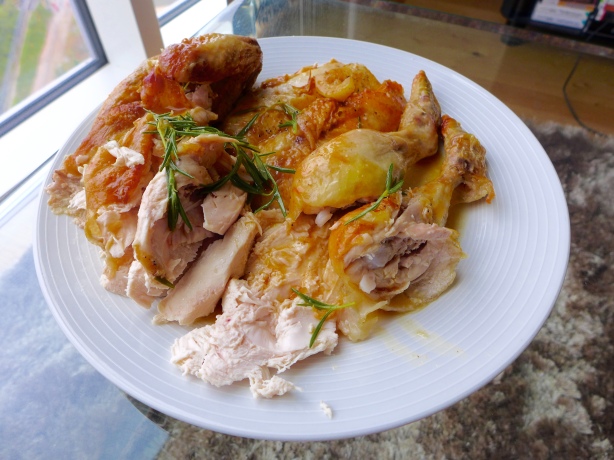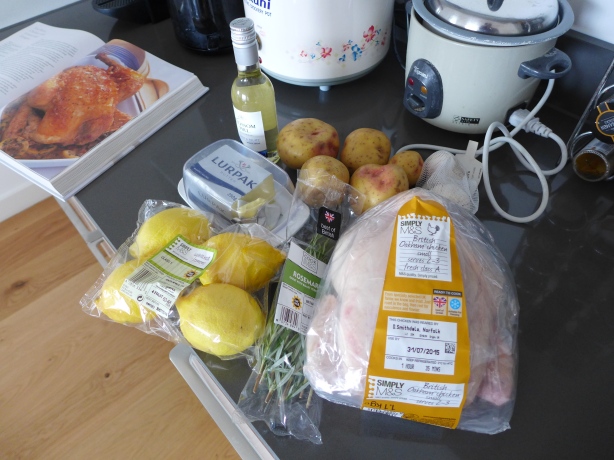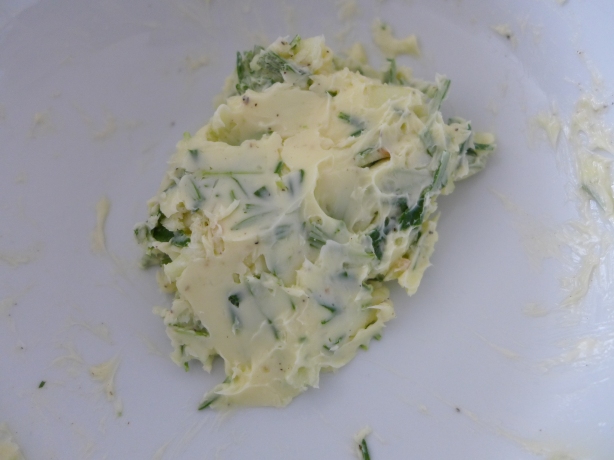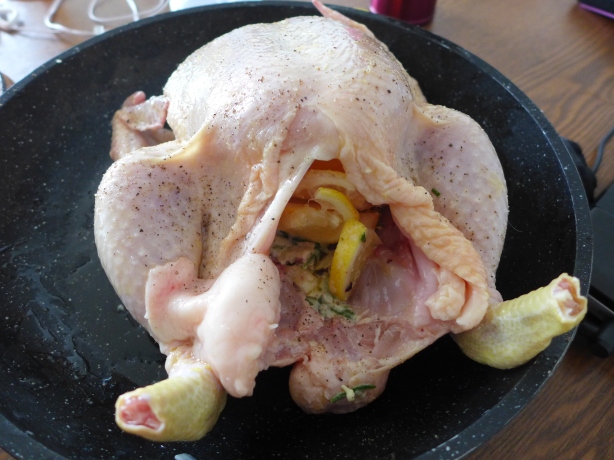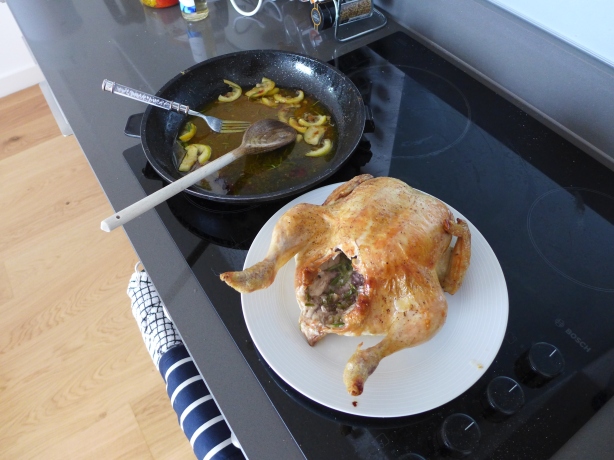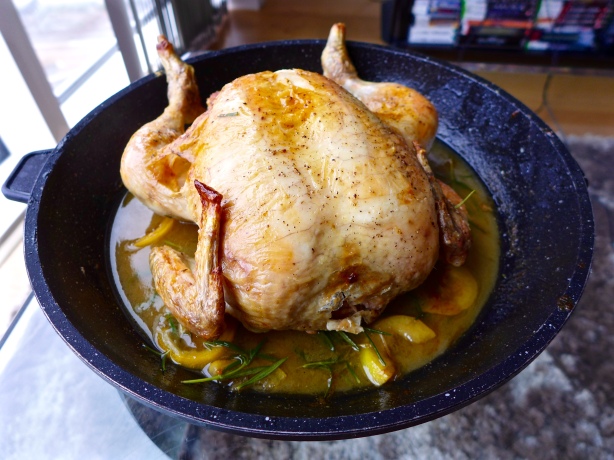From Gordon Ramsay’s F Word
Serves 4
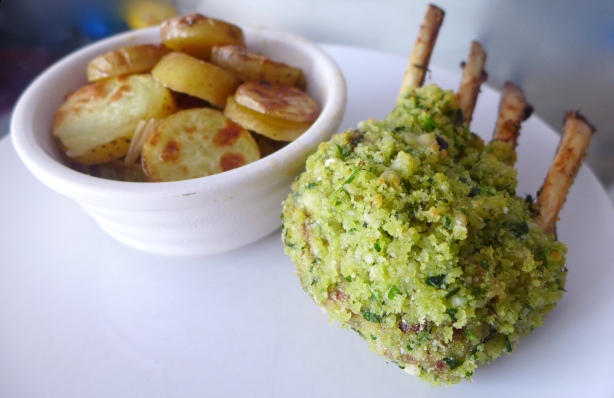
Ingredients
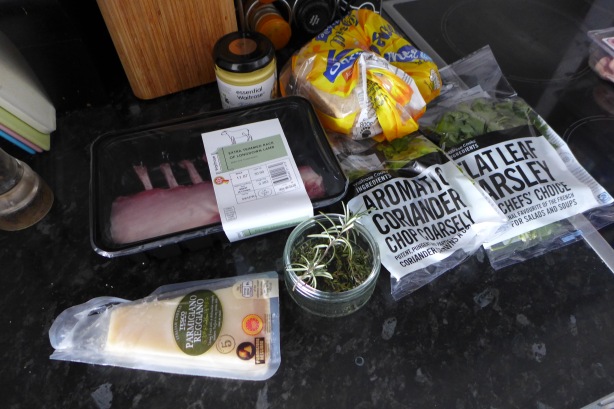
2 large racks of Lamb cut in half with 3 bones per serving
Salt
Pepper
Olive Oil
4 slices of stale bread made into crumbs.
7 Tbs. grated parmesan (roughly ½ a cup)
Sprig parsley
Sprig thyme
Sprig coriander
Sprig rosemary
2 tablespoons English mustard (dijon)
splash of olive oil
Pre-heat the oven to 400 degrees Fahrenheit.
Place lamb on cutting board fat side up. Lightly score the fat layer with a sharp knife. Next, generously sprinkle the lamb with salt and pepper. Mop up the excess seasoning with the rack of lamb, ensuring it’s thoroughly coated.
Heat some olive oil in an oven safe pan. Seal the lamb by holding each side in the oil long enough to develop color (careful not to burn your hands).
Transfer the pan with the lamb into the oven and bake for 7-8 minutes. Prepare the crust while the lamb is cooking.

Place all of the ingredients for the crust except the mustard into a blender and pulse several times until it looks nice and green. Make sure you don’t over do it with the olive oil, just a splash.
Pour the mixture into a deep dish (bowl or plate) and set aside.

Remove the lamb from the oven and brush generously with mustard. Dip the lamb into the crust mixture coating it completely. Dip several times to ensure an even coating. Allow meat to rest for a bit.

Place it back into the oven for 3-4 minutes when you’re ready to serve.

